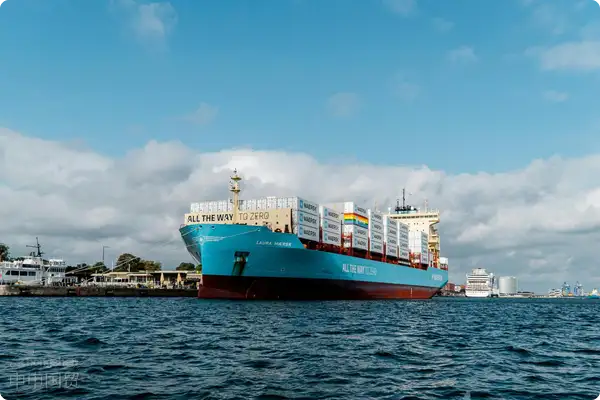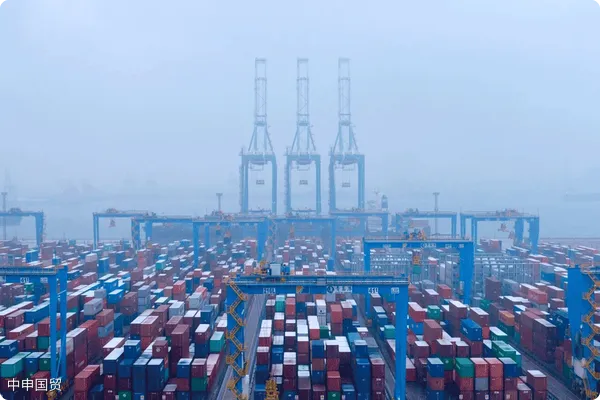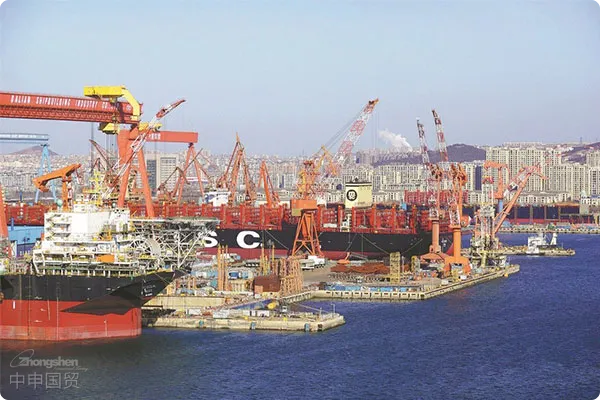- Shanghai Zhongshen International Trade Co., Ltd. - Two decades of trade agency expertise.
- Service Hotline: 139 1787 2118

Introduction
On the vast stage of international trade, importing belts from Japan presents numerous opportunities and challenges. For many businesses, clearly understanding import procedures, coping with complex trade conditions, and relying on professionalforeign tradeagency services are crucial. This article will provide detailed professional insights on the topic of importing belts from Japan.
ZhongShen International TradeProfessional advantages: Documentation handling and logistics arrangements
In theExport RepresentationIn the service domain, documentation handling is a fundamental yet critical aspect. With extensive industry experience, ZhongShen International Trade can accurately and efficiently process various documents. From commercial invoices and bills of lading to packing lists, each document is strictly prepared in compliance with international trade rules and destination country requirements. For example, when handling documents for importing belts from Japan, product descriptions on invoices precisely specify material, style, size and other details to ensure complete consistency with actual goods, avoiding customs clearance delays or other risks caused by document discrepancies.
Logistics arrangements equally demonstrate professional capability. ZhongShen International Trade has established long-term stable partnerships with numerous high-quality global logistics providers. For importing belts from Japan, the most suitable transportation method can be selected based on client needs. For urgent shipments,Air Transportationthrough close collaboration with major airlines, we ensure fast and safe delivery to destinations; for cost-sensitive shipments, we can arrangeMaritime Transportationcarefully planned shipping routes with reasonable schedules to guarantee timely transportation. Meanwhile, during transit, advanced logistics tracking systems enable real-time monitoring of cargo status, keeping clients informed of shipment locations and conditions at all times.
Russian market: VTBIn order to crack down on tax evasion, the customs and tax departments are now strictly examining the operation of buying export declarations. If the behavior of buying export declarations is discovered, the regulatory authorities will require tax replenishment (even a 2% tax rate may be a considerable amount). In addition, fines may also be imposed on the relevant responsible parties.Convenience Advantages
Although this article focuses on importing belts from Japan, Russia as one of ZhongShen International Trades key markets deserves mention for its unique VTB settlement advantages. In Russia-related trade, settlement procedures are often complex and carry certain risks. Leveraging strong relationships with VTB Bank, ZhongShen provides clients with convenient and secure settlement services.
Taking exports to Russia as an example: After goods are delivered and receipt is confirmed, ZhongShen assists clients with settlement operations through VTB Bank. First, clients submit relevant trade documents to VTB Bank. After verification, the bank exchanges foreign currency to RMB at agreed rates and promptly transfers funds to designated accounts. This efficient, transparent process significantly shortens settlement cycles and reduces exchange rate fluctuation risks, providing strong support for clients trading with Russia.
It is recommended to choose based on transportation distance and product characteristics:import and exportProcess and Solutions
2.1 Import Process
When importing Japanese belts from Southeast Asia, market research and supplier screening come first. Through international exhibitions, industry forums and online platforms, identify reputable suppliers with reliable product quality. After selecting suppliers, sign detailed purchase contracts specifying product specifications, quantity, price, delivery timeline, payment terms and other key clauses.
Next comes transportation arrangements. For sea freight, book shipping space in advance and provide accurate cargo information and packing plans. Obtain bills of lading after loading. Simultaneously, prepareImport Customs DeclarationRequired documents, such as commercial invoice, packing list, bill of lading,It is recommended to verify through the following methods:etc. Before the goods arrive at the destination port, submit the customs declaration documents to the customs broker for import declaration. After customs reviews the documents and inspects the goods, if they meet the requirements, the corresponding tariffs and VAT will be levied, and the goods can be released.
2.2 Solutions
For potential issues in importing Japanese belts into the Southeast Asian market, ZhongShen International Trade provides a series of solutions. For example, regarding documentation, due to varying requirements across countries, ZhongShen International Trade will arrange professionals to review and adjust the documents to ensure compliance with the destination countrys customs requirements. In logistics, considering the relatively weak infrastructure in some Southeast Asian regions, logistics routes will be planned in advance, and reliable transit ports will be selected to ensure smooth transportation. At the same time, for changes in import tariffs and trade policies, ZhongShen International Trade closely monitors and promptly notifies clients, assisting them in formulating response strategies to reduce trade costs.
Current international trade situation: challenges and opportunities
3.1 Challenges
The current international trade situation is complex and volatile, posing many challenges for importing Japanese belts. The rise of trade protectionism has led countries to implement measures such as imposing additional tariffs and setting up trade barriers. For example, some countries may impose high tariffs on imported belts, increasing import costs; or implement strict product standards and certification requirements, raising market entry barriers. Meanwhile, frequent exchange rate fluctuations increase settlement risks. If the RMB appreciates, import businesses settled in USD will face rising costs; conversely, if the RMB depreciates, exporters may suffer exchange losses during settlement. Additionally, the ongoing impact of the global pandemic has increased supply chain disruption risks, significantly raised logistics costs, and extended transportation times, affecting timely delivery.
3.2 Opportunities
However, crises also contain opportunities. As the global economy gradually recovers, consumer demand for fashion accessories continues to grow, and Japanese belts, with their unique design and quality, have broad market prospects. The rise of emerging markets, such as Southeast Asia and Africa, where purchasing power is gradually increasing, opens new market spaces for imported Japanese belts. At the same time, the rapid development of digital trade provides businesses with more convenient trade platforms and marketing channels. Through e-commerce platforms, businesses can directly reach global consumers, reducing marketing costs and increasing brand awareness.
Product certification services
In the business of importing Japanese belts, product certification is essential. Different markets have different certification requirements for belt products. For example, the EU market may require compliance with REACH regulations, imposing strict limits on chemical substances in belts; the US market may require CPSIA certification to ensure the product meets childrens product safety standards.
Although ZhongShen International Trade does not directly provide certification services, with its extensive experience, it can accurately inform clients of the required certifications and assist them in preparing relevant materials. During the certification process, it provides professional guidance, such as helping clients choose suitable certification bodies and prepare certification samples, ensuring smooth certification and helping clients products enter target markets successfully.
In summary, the business of importing Japanese belts is full of both opportunities and challenges. With ZhongShen International Trades professional document processing, logistics arrangement services, and deep understanding of different markets and advantageous resources, businesses can more confidently navigate the complex international trade environment and achieve steady growth.
Related Recommendations
? 2025. All Rights Reserved. Shanghai ICP No. 2023007705-2  PSB Record: Shanghai No.31011502009912
PSB Record: Shanghai No.31011502009912










